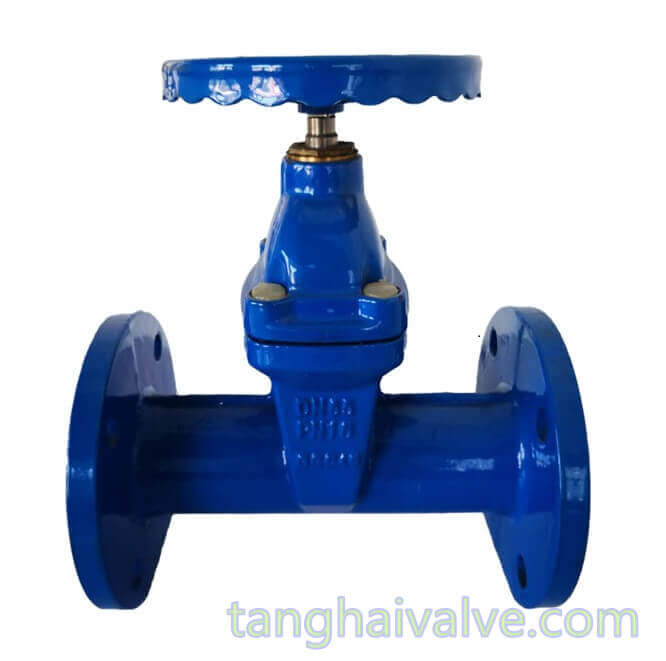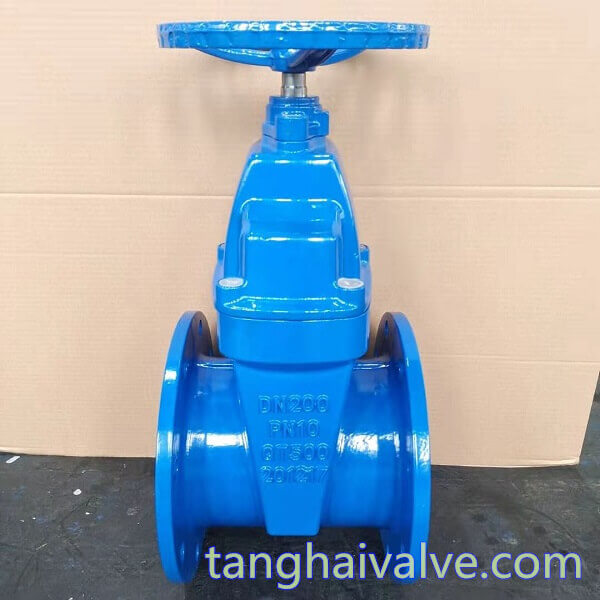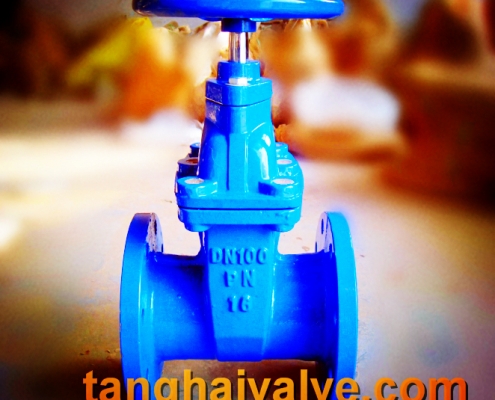Advantages and disadvantages of gate valve and its scope of application
This article will explain the advantages and disadvantages of gate valves and the scope of application. A gate valve is a valve in which the opening and closing part moves along the vertical direction of the pipeline channel axis. The

DIN-F5-BB-NRS-soft seated-wedge gate valve (10)
opening and closing part is called a gate, which is mainly used to cut off the flowing medium in the pipeline and can only be used fully open or fully closed. Therefore, the gate valve cannot be used as a regulating valve to regulate flow. Gate valves of different materials are adapted to different environments and temperatures, but gate valves are generally not used in pipelines that transport mud and other media, because these media contain impurities, which will affect the sealing effect of the gate.
Advantages of gate valve:
1. It can only be fully open and fully closed. When the gate is fully open, the resistance of the fluid through the valve is small;
2. The torque required for opening and closing is small and labor-saving;
3. It can be used in pipelines where the medium flows in both directions, and the flow direction of the medium is not restricted;
4. Compared with the shut-off valve, when the gate valve is fully opened, the degree of erosion and erosion of the sealing surface by the fluid medium is low;
5. Simple structure, convenient installation and use, and good manufacturing technology;
6. The overall structure length of the valve is relatively short.
Disadvantages of gate valve:
1. The overall dimensions and opening height are relatively large, which requires a large installation space;
2. When the gate is opened and closed, the friction with the sealing surface of the valve seat is large, causing certain wear on the sealing surface;
3. Usually the gate valve has two sealing surfaces, which is difficult to process and grind, and it is quite troublesome to maintain;
4. It takes a long time to open and close.
Gate valves usually have more applications in the following areas:
1. Oil and natural gas pipelines.
2. Transportation pipeline and storage equipment of refined oil.
3. Wellhead equipment for oil and natural gas exploitation.
4. City gas transmission pipeline.
5. Tap water and sewage treatment projects.
TH Valve is a professional manufacturer of butterfly valve, gate valve, check valve, globe valve, knife gate valve, ball valve with API, JIS, DIN standard, used in Oil, Gas, Marine industry, Water supply and drainage, fire fighting, shipbuilding, water treatment and other systems, with Nominal Diameter of DN50 to DN1200, NBR/EPDM/VITON, Certificates & Approvals: DNV-GL, Lloyds, DNV, BV, API, ABS, CCS. Standards: EN 593, API609, API6D
Related news/knowledge:
Advantages and disadvantages of butterfly valve and structure diagram
Classification and advantages of gate valve
The advantages and disadvantages of butterfly valves
Selection and application of eccentric butterfly valve





 © Copyright 2020 Tianjin Tanghaidongyang Valve Co., Ltd. All Rights Reserved.
© Copyright 2020 Tianjin Tanghaidongyang Valve Co., Ltd. All Rights Reserved.